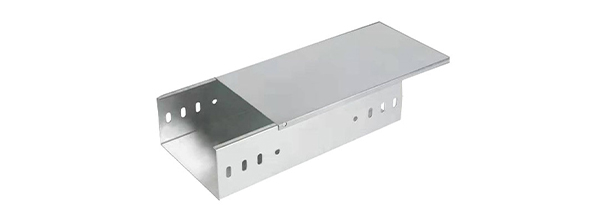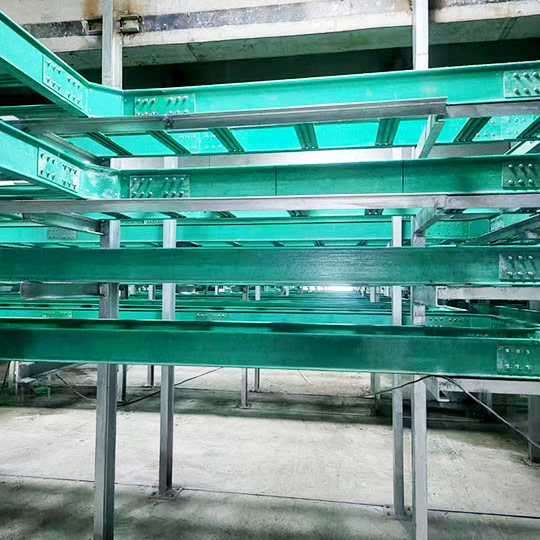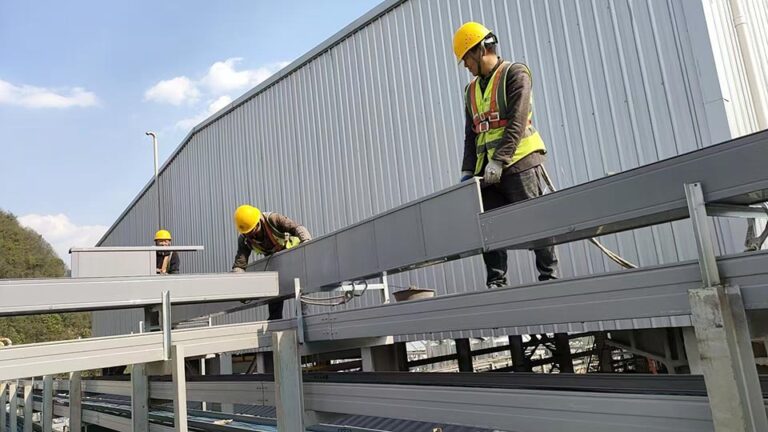Introduction
Trapezoidal FRP cable trays are a robust and reliable solution for industrial and commercial electrical installations. Designed with a trapezoidal cross-section, these trays offer exceptional load-bearing capacity while remaining lightweight and corrosion-resistant. Made from fiberglass-reinforced plastic (FRP), they provide long-lasting support for heavy cable bundles in harsh environments.
This guide will cover the advantages, applications, installation steps, maintenance tips, and specifications for trapezoidal FRP cable trays.

Advantages of Trapezoidal FRP Cable Trays
| Advantage | Description |
|---|---|
| High Load Capacity | The trapezoidal design distributes weight evenly along the tray’s edges, supporting heavy cable bundles without sagging. |
| Corrosion Resistance | FRP is resistant to moisture, UV, salt, and most chemicals, making it suitable for outdoor and industrial environments. |
| Long Lifespan | Typically lasts 25–30 years with minimal maintenance. |
| Lightweight | Easier to handle and install compared to metal trays, reducing labor costs. |
| Cost-Effective | Low maintenance and long service life make it a budget-friendly solution over time. |

Applications
Trapezoidal FRP cable trays are widely used where high strength, durability, and environmental resistance are required:
| Application | Description |
|---|---|
| Industrial Plants | Supports heavy machinery cables and dense control wiring. |
| Power Generation Facilities | Ideal for high-voltage cables and large electrical conduits. |
| Infrastructure Projects | Airports, railways, and commercial buildings with multi-cable layers. |
| Coastal and Marine Installations | Resists saltwater and humidity for outdoor environments. |
Installation Guidelines
Proper installation is essential to maximize the performance and lifespan of trapezoidal FRP cable trays. Follow these steps:
- Load Assessment
Calculate total cable weight and select appropriate tray size and thickness using the manufacturer’s load charts. Include future expansion for flexibility. - Support Brackets
- Position support brackets according to load and span.
- Use corrosion-resistant fasteners compatible with FRP.
- Avoid Sharp Bends
- Maintain smooth curves to prevent stress on cables and tray material.
- Use prefabricated elbows and bends where possible.
- Tray Connection
- Ensure joint connections are secure using recommended bolts or clamps.
- Align trays to prevent twisting or misalignment.
- Environmental Considerations
- Account for UV exposure, wind load, temperature variations, and chemical exposure.
- Apply protective coatings if necessary for extreme environments.
- Grounding & Bonding
- FRP is non-conductive; ensure electrical grounding follows local codes.
- Inspection & Adjustment
- Periodically check for loose fasteners, tray sag, or damaged sections.
- Adjust support spacing and replace defective parts promptly.
Maintenance Guidelines
Maintaining trapezoidal FRP cable trays ensures long-term performance:
- Cleaning: Remove dust, chemical residues, and debris.
- Visual Inspection: Look for cracks, warping, or loose fasteners.
- Cable Security: Ensure cables remain organized and tied properly.
- Environmental Monitoring: Check for exposure to extreme temperatures, UV, or chemicals.
- Record-Keeping: Maintain logs of inspections, replacements, and repairs.
- Damage Response: Replace or repair trays showing structural compromise promptly.
Maintenance Schedule Suggestion:
| Task | Frequency |
|---|---|
| Visual Inspection | Quarterly |
| Cleaning | Semi-Annually |
| Load Check | Annually |
| Structural Integrity Check | Every 2 years |
Installation Challenges and Solutions
Challenge 1: Long-span sagging
Solution: Increase support frequency or use thicker tray sections.
Challenge 2: Harsh chemical exposure
Solution: Select FRP grade resistant to specific chemicals, or apply protective coatings.
Challenge 3: Outdoor UV degradation
Solution: Ensure trays have UV-stabilized resin.
Challenge 4: Heavy cable bundles
Solution: Utilize trapezoidal trays with maximum depth and reinforced edges.

Maintenance Tips
- Cleaning: Remove dust or chemical residues using a soft brush or water spray.
- Visual Inspection: Check for cracks, loose bolts, or sagging.
- Cable Security: Ensure cables remain properly supported and tied.
- Environmental Monitoring: Regularly inspect for corrosion or chemical damage.
FAQ
Q1: Can trapezoidal FRP cable trays be used outdoors?
Yes, they are UV-resistant and suitable for industrial, coastal, and outdoor applications.
Q2: What is the typical lifespan?
Typically 25–30 years with minimal maintenance.
Q3: How to select the correct tray size?
Consider cable weight, bundle size, and installation environment. Refer to manufacturer’s load tables.
Q4: Are they suitable for chemical plants?
Yes, FRP is resistant to most chemicals, moisture, and salt, making it ideal for industrial environments.



